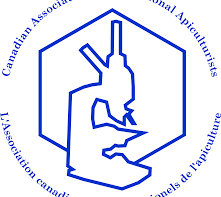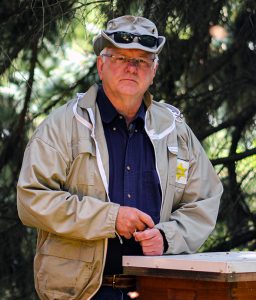Learning The Key Aspects Of Bee Lining In Ohio
by Larry Connor
Bee lining is a method of finding bee colonies, a form of honey hunting. Dame Eva Crane (1) reports that European humans once used many methods of finding nests of honey bees. In the late winter, honey hunters of the Hungarian, Slovak, and Russian peoples walked through the woods searching for dead bees and nest debris on the snow along south-facing forest edges. The Carpathians and Latvians looked for fresh tracks of the pine marten (Martes martes) that could lead to a bee nest, often indicated by wood debris where the marten had opened the nest with its teeth and claws. Ukrainians followed bear tracks.
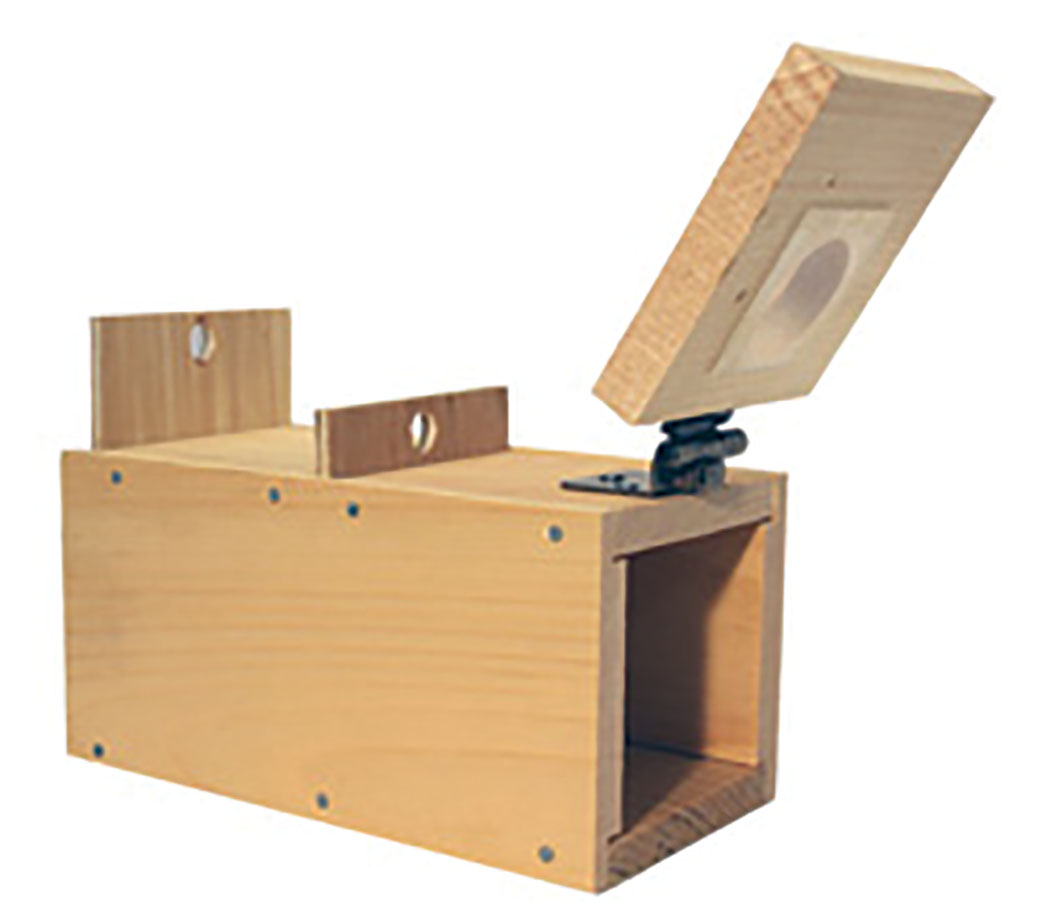
Bee lining box from Betterbee.
In Slovakia, honey hunters visited flowering willow in the early Spring and listened for bees working the catkins. The hunters watched foraging bees gather nectar and watched the direction they flew. Some attached a blade of grass to a bee to help them watch the direction of the bee’s flight back to the hive, and also to slow the bee in her effort to return home.
Crane writes that beekeepers would watch bees return to their hive later in the day, when it was easier to see them flying against the sky. Bees were primarily located by listening for the sound of the bees, often from a distance.
In North America, the “English Man’s Fly” preceded the European invasion of the continent, providing rich rewards for those who located the nests and harvested the honey. Their honey hunting became more sophisticated with the development of bee lining, using boxes of collected bees and sequentially releasing them to determine the direction of bee flight, and thus the direction of the bee colony. The location of these nests provided the honey hunter with a source of both honey and bees.
A.I. Root wrote about this process, as did the Director of the Museum of Fine Arts in Boston, G.H. Edgell, who wrote about his boyhood experiences hunting nests in New Hampshire. He claimed that his small book The Honey Hunter (2) brought him much greater fame than any of his publications about the fine arts. This book was of great use to a young scientist at Cornell University who has spent a lifetime using bee lining in his research on colony decision-making and behavior. This is Dr. Thomas Seeley, who will publish an account of his experiences with bee lining in 2016 in the latest of his very informative and readable books.
Last month I interviewed Dan Conlon, a beekeeper working in Western Massachusetts, and the newly appointed Vice President of the Russian Honey Bee Breeders’ Association. During our conversation, Dan explained that his first beekeeping teacher was a farmer he worked for in southwestern Ohio. He lived in Centerville, and worked south of there, where “the land consisted of farm lands and woodlots all the way to Cincinnati and the Ohio River.”
“Today this region is all developed as houses and malls –those places I remembered, and the Bell Farm no longer exists. This is significant to me as I have been a strong advocate for farmland protection, and the preservation of open space in Massachusetts – because of what I saw happen to my childhood landscape.”
Here is a follow-up to our earlier interview, focusing just on Dan’s experiences lining bees in Ohio.
Larry: Tell me about your experience with lining bees. How did this get started?
Dan: I was introduced to bee lining by Hugh Bell, the same guy who introduced me to bees as a teenager. This was outside Centerville – part of the greater Dayton area. Everything south of Centerville was farmland. As a teen I worked with haying and other chores. Mr. Bell had about two dozen beehives. Because no one in his family was interested in bees and I was fascinated with them, he took the time to teach me about bees and beekeeping. This was in the 1960s.
The second year working for him, I was invited to go along on Sunday afternoons to go bee lining. We were joined by a couple of farmers and others who worked construction jobs. They were all working men; they were probably in their 50s when I was a teen. At the time they seemed really old to me, but they were able to walk miles over uneven ground and chop down and cut up trees. Nothing was mechanized, and we only took down trees that we could get onto a truck, so the trees had to be near a solid roadbed and not too big around.
These were the older guys I looked up to, the source of stories about all kinds of things, clowning around, and probably when I got my first taste of bourbon.
In this part of Ohio it is flat, and there were lots of fields and woodlots. We would get in a car and drive to the countryside. Then we walked down railroad tracks. Sometimes we would find a field of buckwheat, where the farmer was resting the soil as a part of corn and soybean crop rotation. We would look for bees on the buckwheat flowers. We collected fully loaded bees into our lining box.
I made a lining box with a cigar box and some honey comb. Sometimes we would set out honey comb in the box and once the foraging bees showed an interest, we would close the bees into the box. By opening a slide on the side of the box, the men could allow one bee out at a time. The bees were usually filled with honey, and slow fliers. We would watch the direction they flew home. As we lost sight of the bee we would release another bee, and follow her. By doing this we were able to find the direction of the woodlot she was flying to. This was an advantage of the Ohio landscape, as the bee trees were almost always in woodlots, as there were few other trees in the open fields. If there were, they would be easy to spot.
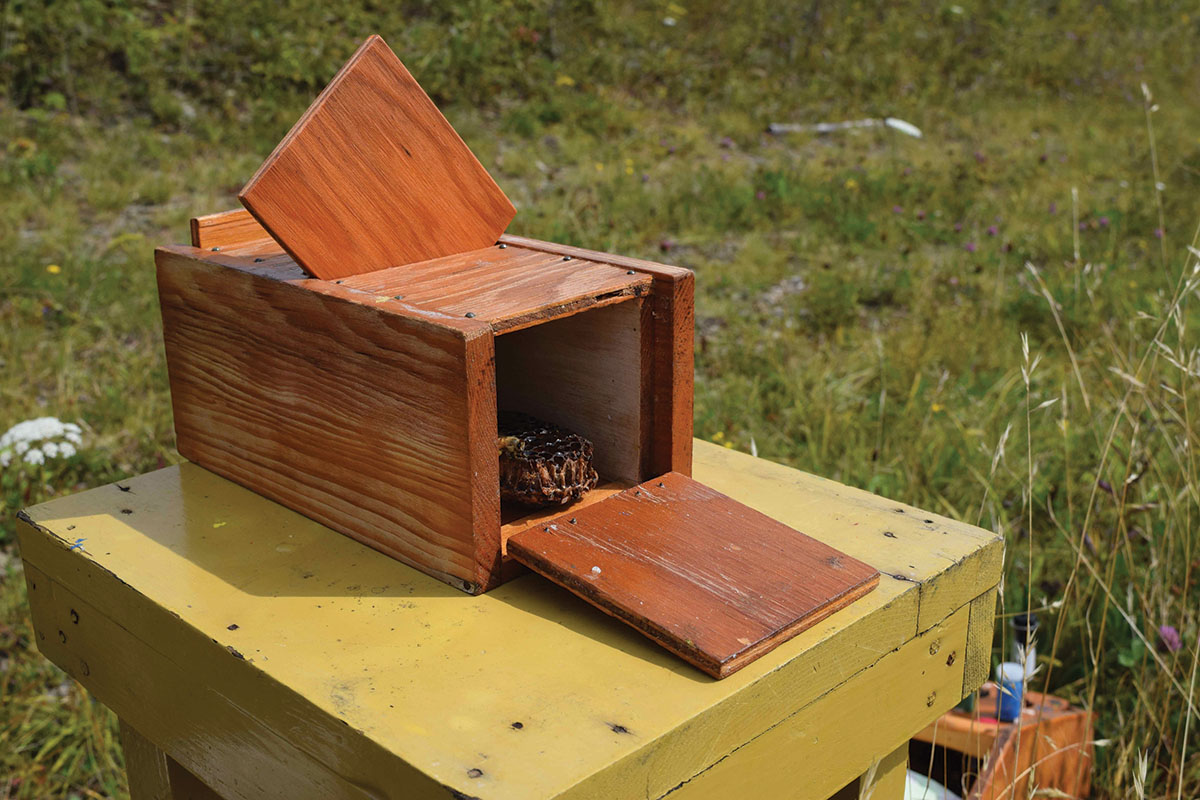
Box used by Tom Seeley. Photos from his upcoming book on the topic. (photos taken by Megan Denver.)
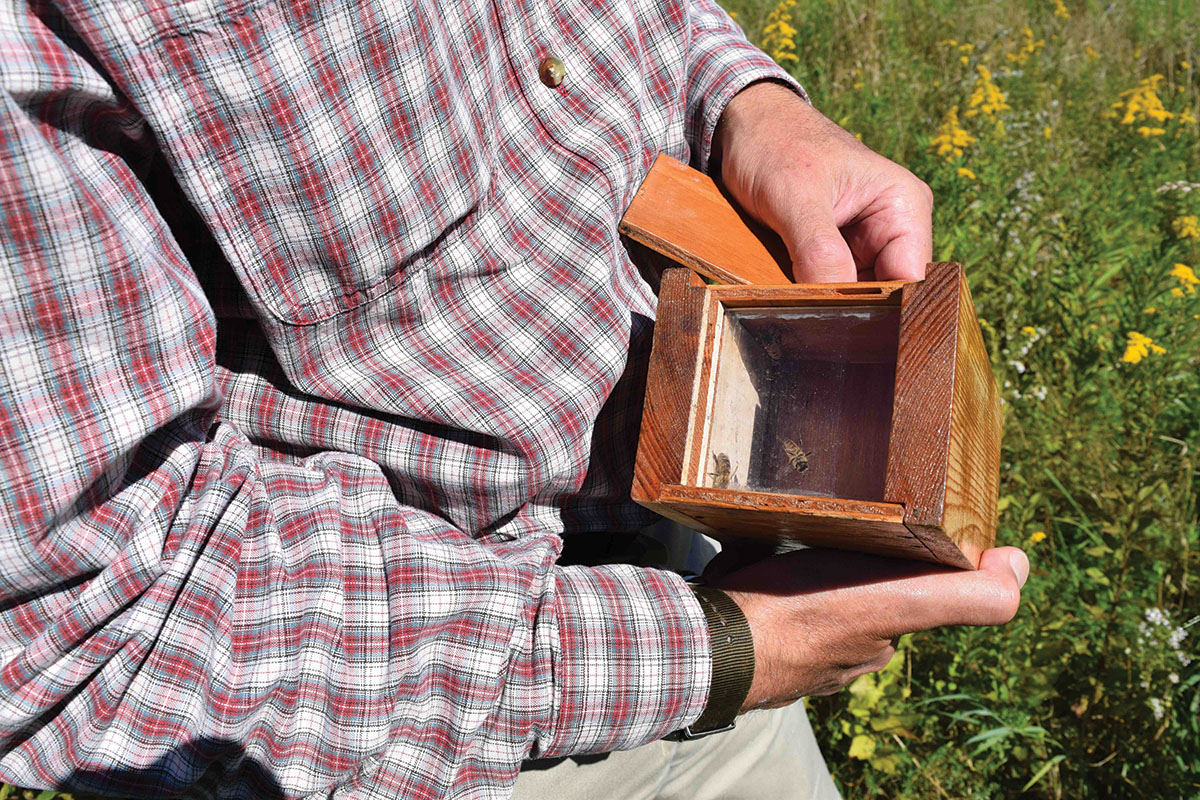
The cigar box had a slide, and I could let the bees out one at a time. In Ohio we would eventually zero into one of these woodlots. As we headed to the woodlot we kept releasing foragers and watched them go to their nest. This helped us determine where in the woodlot we might find the bees.
I was able to do this eight or nine times, during which time we discovered about six bee trees. We may have cut two of them – it was a long time ago. Our outings were more social than anything else. I did help Mr. Bell cut down one of the trees that was small enough for us to handle.
These woodlots were usually not on Mr. Bell’s or the other men’s land, so they had to get permission to cut the trees. Sometimes we were some distance from any road access, and the trees were too big to cut and haul out. They would mark the trees and leave them standing.
They would cut the tree and leave it intact on the ground for a week, allowing the bees to settle. We would return, and he used an old sheet to cover the entrance holes in the tree, and cut it into pieces. We did not screen the entrances, which I have seen others do. The sheet kept most of the bees out of the air. Once cut into pieces, we would carry the section of tree containing the bees out of the woods, and put it in the truck, and move it into the bee yard. The men cut as close to the nest as they could to reduce weight. Later this allowed access for the bees to move up into a Langstroth brood chamber.
With the trees we found in the Fall, later in the season, we let the trees Winter, and would never touch them, but knew where they were.
The second tree that we harvested was not moved – instead they split the hive on the site because it was too big and it was located in the middle of this woodlot. In the Spring they cut it, looking for the brood and bees, as well as any honey – they always thought they would get honey off these trees.
They used a two man cross-cut saw, and it was work to open the tree to gain access to the bee nest. They would use axes and wedges to split the log open. They were always concerned about finding the queen. We would string some of the brood combs into frames and put them into a hive body. Of course, we included the queen when they found her. Like a swarm, once the queen was moved the bees would start going to the new hive. They would leave a box with brood combs in it. Later we returned to catch any bees that were still in the old log hive. These were added to the new colony.
Most of what we did was done in the middle of the day, so there were foragers out of the tree, and there were fewer upset bees.
When we carried the log back to the apiary, it was set upright, on end, and left for the bees to buildup and rebuild comb. Mr. Bell returned to the log hive a month later and would drill a hole from the top. There he put a regular Langstroth hive body with an open bottom on the top of the hive. This allowed the bees and the queen to move up to the regular hive body, complete with standard frames. Once the bees were in the Langstroth, I would check for the queen and look for brood. If both were found, the men placed the hive body on a stand in the location of the log hive. The log was pulled back several feet behind the flight into the entrance. The bees would relocate to the entrance of the Langstroth hive, and the colony had been successfully shifted to the new colony. This transfer from log to Langstroth happened over several months, as the colony expanded.
Inside the log there was still brood and honey. Mr. Bell would split the hive open and carefully remove the frames of brood, tie them into frames and install them into a hive body. There would still be bees there, primarily young nurse bees that had emerged from the brood combs. The older bees would have moved to the new hive location.
Basically, the majority of the bees would end up at the Langstroth hive.
Larry: What was your relationship with Mr. Bell?
Dan: I was probably included in these adventures because Mr. Bell recognized that I was fascinated by the bees. His early influence was important to forming the person I became. He would include me all the time. [He] gave me my first bee hive and my first copy of ABC-XYZ. My parents would wonder what I was doing when I brought bees back to our backyard in suburbia. Hugh Bell just liked showing me the bees and gave me an excellent introduction to the bees.
While these are old memories, but I don’t remember many issues with the bees. They were concerned about getting American foulbrood. They would use a sulfur drug for foulbrood. That is no longer legal to use anymore.
All in all, they were good times. I still have a nice feeling when I think about my experiences with Hugh Bell and his bees.
Larry: What other methods did Bell use to obtain new bee hives?
Dan: I don’t remember them losing as many colonies as we do today. I don’t remember using any package bees. They would make up new colonies using queen cells in May and June, primarily using cells produced during swarm season. I think the bees were sometimes the old black bees, as they were a bit stingy. They were not as tame as those we had in the managed hives. He may have obtained queens from the other men in the group, as they seemed to be pretty good friends.
Larry, I do remember successfully producing my first queens, from cells, in one frame nucs. Bell took me to a bee meeting – I think Lebanon, Ohio – where I swapped two of these queens with another beekeeper Bell knew. I got two of his queens and he got my two. I believe this was a common practice in those days. Bell did things rather routinely – making splits to re-populate dead-outs, sold a couple nucs (or traded), used cells when they were in a favorite hive, and once the hive was prospering never touched it during a nectar flow. He always had about two dozen hives and that seemed to be all he wanted – extra swarms were sold or given away. Honey bees probably were important to his crop farming, and he did sell honey at the farm. Mostly I think he enjoyed beekeeping as a hobby or way of relaxing as we did most of this after regular work times and on Sundays.
Larry: Have you done any bee lining in Massachusetts?
Dan: Once or twice I went with Hal White, old dairy farmer, quite a naturalist. We became friends, and he liked to take walks. Hawley State Forest was a nice place to go for walks. We did the bee lining in the State Forest. We did find two bee trees but did not take them down. It was a lot more difficult to find bee trees in the forest than in the relative flat land of Ohio.
We have seen a lot of bee trees in the past few years, so it is clear that the bees are living in the trees again, after the introduction of tracheal and Varroa mites and the rapid die-off of the bees in feral situations. We have a lot of logging in my area and the loggers call and ask if I want the bees they find in the forest. The bees look a lot like Russians because of the striping on the abdomen that is more common in the Russians we raise. But there is a lot of color variation in the Russian bee strains. The queens often have striped abdomens, making them harder to find because they blend in so well with the rest of the bees. Striping on the abdomens of queens makes them much harder to find.
This interview has inspired me to do some bee-lining again after you forced me to recollect this enjoyable activity. I do think there are some bee trees to discover once again in western Massachusetts. Maybe I will take my grandson along and tell him a few Hugh Bell stories.
Larry: I am sure there are lots of beekeepers who would like to tag along on that adventure!
Dr. Connor will speak at the Mason Valley Beekeepers Annual Conference, located in Yerington, NV, on February 27.
1. Eva Crane, 1999. The World History of Beekeeping and Honey Hunting. Routledge, New York.
2. Edgell, G.H. 1949 The Honey Hunter, reprinted by Kessinger Publishing, LLC (March 1, 2007)








